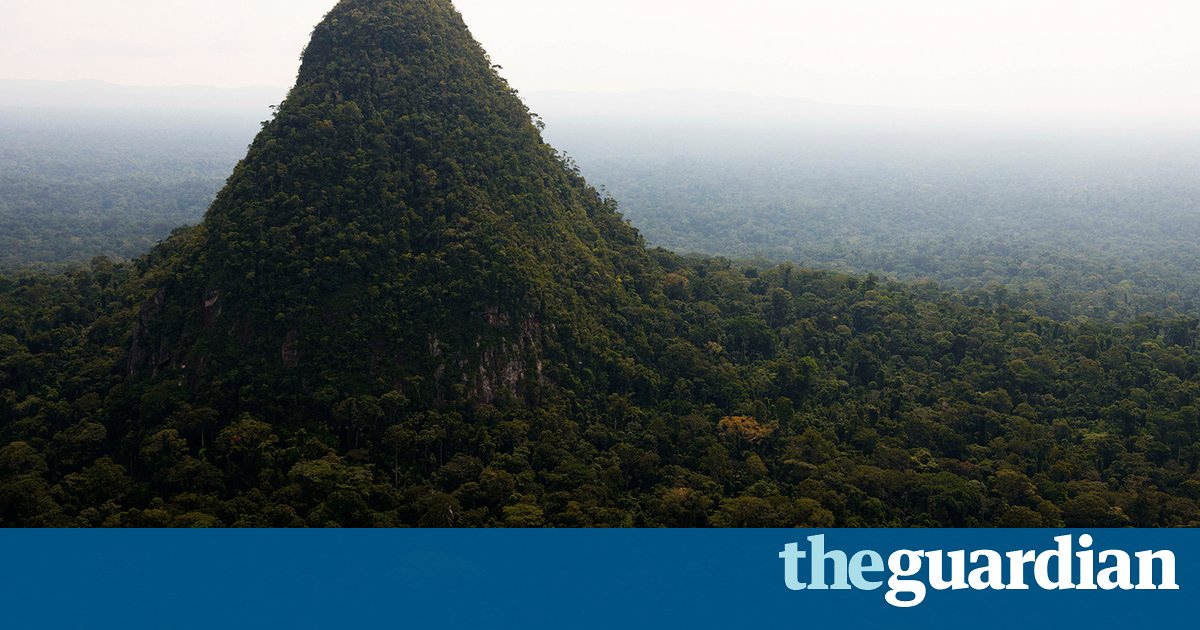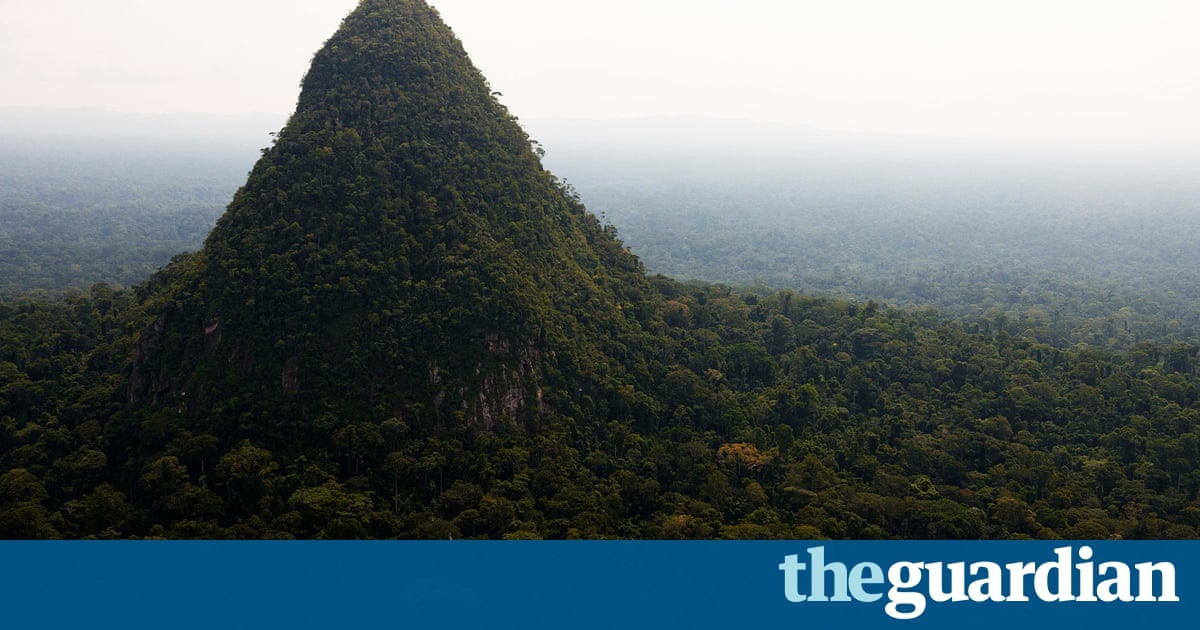Indigenous federation sues Peru over new national park

David Hill: Oil and gas concession overlaps 1.3m hectare protected area inhabited by indigenous peoples in isolation

One of the almost 100 resolutions adopted by the World Conservation Congress (WCC) held in Hawaii in September 2016 was that protected areas such as national parks should be no go for mining, oil and gas operations, agriculture, dams, roads and pipelines. Another resolution was that indigenous peoples territories overlapped by protected areas should be recognised and respected, calling upon International Union for the Conservation of Nature (IUCN) members, non-member States and others to do so.
While it might not seem particularly significant or startling to demand that protected areas should be, er, protected from such damaging activities as oil operations, and while WCC resolutions arent legally-binding on anyone, such calls do urgently need to be made. Take as an example Peru, the country that, according to the IUCN, established more protected areas than any other in 2016. Undoubtedly its most important conservation achievement in recent years has been the creation of the 1.3m hectare Sierra del Divisor National Park, although approximately 40% is included in an oil and gas concession ultimately controlled by a Canadian-headquartered company, Pacific Exploration and Production.
Even more alarming is how the park has been divided into different zones by the Management Plan approved in November 2016. Instead of being a strictly protected zone because of the almost 15 years-old proposal to establish the Yavari-Tapiche Reserve for indigenous people living in isolation, the entire north-east part of the park has been categorised as a special use zone where the ecosystem, according to Peruvian law, can be transformed.
The reason? Compare maps from the Environment Ministry and Energy Ministry and youll see: that is the part of the park overlapped by Pacifics more than 1m hectare oil concession, Lot 135.
No doubt about it, establishing the park was an impressive achievement, but what about the rights of the indigenous people in isolation? How devastating might be the impacts if their territories arent protected? The proposal for the Yavari-Tapiche Reserve was made four years before Pacific signed the contract for Lot 135 and then it was ignored for over a decade – and now a national park has been created which permits and effectively consecrates the companys operations there.
No wonder indigenous federations in Peru have reacted so furiously, accusing the government agency running protected natural areas, SERNANP, of backtracking on commitments made during the process to establish the park and misinforming indigenous communities in the region. Along with AIDESEP [in Lima] and ORAU [in the Ucayali region] we supported the creation of the park on the condition the rights and protection of the indigenous peoples living there would be guaranteed by SERNANP, stated ORPIO, representing more than 20 indigenous organisations in the Loreto region.
According to ORPIO, SERNANPs commitment to protecting the indigenous people in isolation was made most clearly in a 2013 report on the process to establish the park. In order to ensure the rights of indigenous people in isolation and initial contact are protected . . . the zonification will consider these areas [the proposed Yavari-Tapiche Reserve plus the Isconahua Reserve and the proposed Sierra del Divisor Occidental Reserve, all of which are included within the park] as strictly protected, SERNANPs report stated.
ORPIOs response to the approval of the Management Plan has been to file a lawsuit with Loretos Superior Court of Justice against SERNANP, the Energy Ministry and Perupetro, the government agency which establishes oil concessions. ORPIO, supported by lawyers from the Lima-based Instituto de Defensa Legal, is requesting that the judge orders SERNANP to modify the zonification so the proposed Yavari-Tapiche Reserve is a strictly protected zone rather than a special use zone. ORPIO is also requesting the judge orders the Energy Ministry to abstain from permitting further exploration in the concession – following operations by Pacific in 2012 and 2013 – and to re-draw its boundaries so the proposed Yavari-Tapiche Reserve is excluded.
ORPIO is arguing that the rights of the indigenous people in isolation to life, health, natural resources, communal property, self-determination and consent, among others, are being violated by the oil concession and the parks zonification. These rights are enshrined in Perus Constitution, the federation asserts, as well as the International Labour Organisations Convention 169 and jurisprudence of the Inter-American Court of Human Rights, among other legal instruments.
Indigenous people living in isolation, as Peruvian law calls them, are extremely vulnerable to contact with third-parties because of their lack of immunological defences, which can lead to the spread of diseases and fatal epidemics. The most recently-contacted groups in Peru have been devastated: between 30%-50% of the Matsigenka-Nantis are reported to have died since the 1970s, almost 50% of the Nahuas in the 1980s, and approximately 25% of the Chitonahuas since the 1990s.
ORPIOs president, Jorge Perez Rubio, believes oil operations in the Sierra del Divisor National Park would have direct impacts – and not just as a result of potential contact between oil crews and the people living in its most remote parts. If the area in the park where the isolated people live isnt made a strictly protected zone, it will be contaminated by oil activities, he told the Guardian.
So can the Management Plan be changed? Paul Salaman, from the US-based Rainforest Trust, says it was a Peruvian NGO, CEDIA, financed by the Trust, which did all the work for SERNANP and wrote the Plan. Certainly, if something actually physical happened [involving oil operations], we would be there to change the Plan or to step in and lobby against development activities, he told the Guardian. For us a national park is sacrosanct. Its untouchable. The zonification is just to meet the governments requirements, but we are confident it will remain protected.
Salaman plays down the threat of oil, describing it as implausible and highly unlikely because exploration has never happened before in Peru in a national park, because communities will rally against that and to get to those areas they would need prior permission from indigenous communities, and because of low oil prices. It would be easy, he says, to highlight the zonification and stop exploration. I say easy. Its a process and nothing, I guess, is straightforward in Peru, but its something that we as an organisation would rally to immediately, he told the Guardian.
Lelis Rivera, from CEDIA, appears to think the Management Plan can be changed too. He told the Guardian that, according to an unusual article in the resolution approving the Plan, the zonification still has to be ratified or changed before coming into effect, following consultation with communities in the region. Im sure the communities will decide on what is best for those who may be impacted negatively, on the basis of official information provided by the state and non-state entities involved, he says.
Rivera says CEDIA provided technical and financial support to write the Management Plan, but SERNANP led the process. He says the zonification was based on previously acquired rights and lays the blame for the controversy on the Culture Ministry, which he says had disagreed with the zonification in the run-up to the park being established.
However, the Culture Ministry was never able to provide an official document supporting its request for the zonification to be changed, Rivera told the Guardian. It was all oral – even now. As long as there is no official document showing a genuine superimposition between the park and any recognised reserve, the arguments of ORPIO and the Culture Ministry lack strength. This issue is now in the Ministrys hands.
Numerous organisations and individuals, going back more than a decade, contributed to establishing the Sierra del Divisor National Park. So what do some of the most important think of the Management Plan? Are they concerned about the zonification and do they hope SERNANP can change it?
Geraldine Henrich-Koenis, from The Nature Conservancy (TNC), based in the US, told the Guardian they hope to continue coordinating with SERNANP and the Culture Ministry so that the rights of indigenous peoples in voluntary isolation or initial contact are taken into account.
The recognition of territory for indigenous groups in voluntary isolation is a highly complex process and requires, not only the participation of TNC and other civil society agencies, but mainly the political will of the Peruvian State, Henrich-Koenis says. The creation of defined territories for the protection of indigenous peoples in voluntary isolation or initial contact does not depend on SERNANP, but on the Ministry of Culture.
For Corine Vriesendorp, from The Field Museum in the US, it is SERNANP that has the responsibility to modify the usage norms to protect people and nature. Failing to do so threatens the integrity of Perus national parks, she says, which are its strictest category of protection.
The overlap of Lot 135 with the northern part of the park threatens those isolated indigenous peoples, the rights of neighbouring communities, the parks biodiversity, and the historic intangibility of Peruvian national parks to oil development, Vriesendorp told the Guardian.
This isnt to say the Management Plan completely ignores the rights of indigenous people in isolation. Far from it. According to the Plan, the entire south-east part of the park, which overlaps the 298, 487 hectare Isconahua Reserve, will bea strictly protected zone.
Happily the Isconahua area has been considered a zone of strict protection, so in that case we are content, says Miguel Macedo, from the Peru-based Instituto del Bien Comun. As for the proposed reserves, yes, were concerned about them, given that extractive operations arent compatible with protecting indigenous peoples in isolation and initial contact.
For Macedo, the fundamental problem isnt the Management Plan, but a 2006 law which supposedly protects the rights and land of indigenous peoples in isolation but includes crucial loopholes. The Plan contains everything it should. The problem is the superimposition of rights: the park, the proposed reserves, the oil concessions, he told the Guardian. The ideal thing would be to modify the law, but I think thats improbable. I think that what can be done to protect the people in isolation is for the proposed reserves to be established. What needs to be done is increase the pressure on Pacific and SERNANP.
In an attempt to accelerate the process to establish the two proposed reserves, national indigenous federation AIDESEP filed a lawsuit in August 2016 with Limas Superior Court of Justice. It is charging the Vice-Ministry of Culture with failing to comply with 2007 regulations by delaying, for over three years, taking a crucial step towards creating the reserves, as well as meanwhile failing to implement temporary mechanisms to protect the indigenous peoples in isolation living there. AIDESEP is requesting that the judge orders the Vice-Ministry, part of the Culture Ministry, to comply with the 2007 regulations.
SERNANP, the Peruvian NGO ProNaturaleza and the US-based Moore Foundation did not respond to questions from the Guardian about the Management Plan.